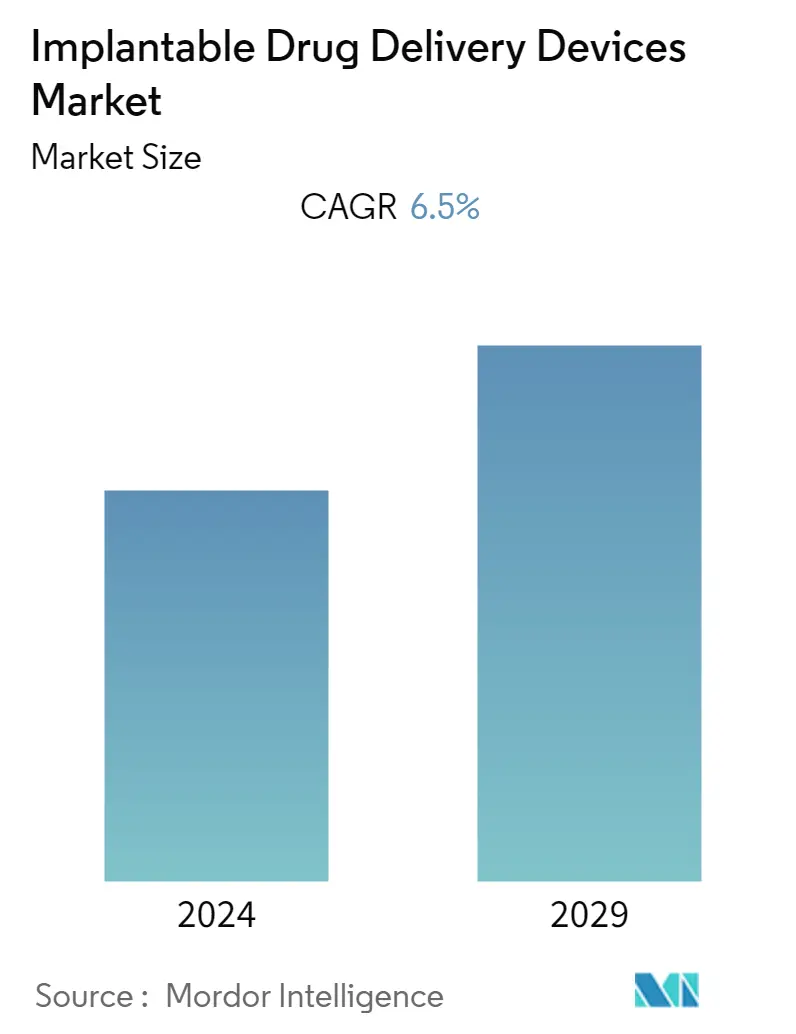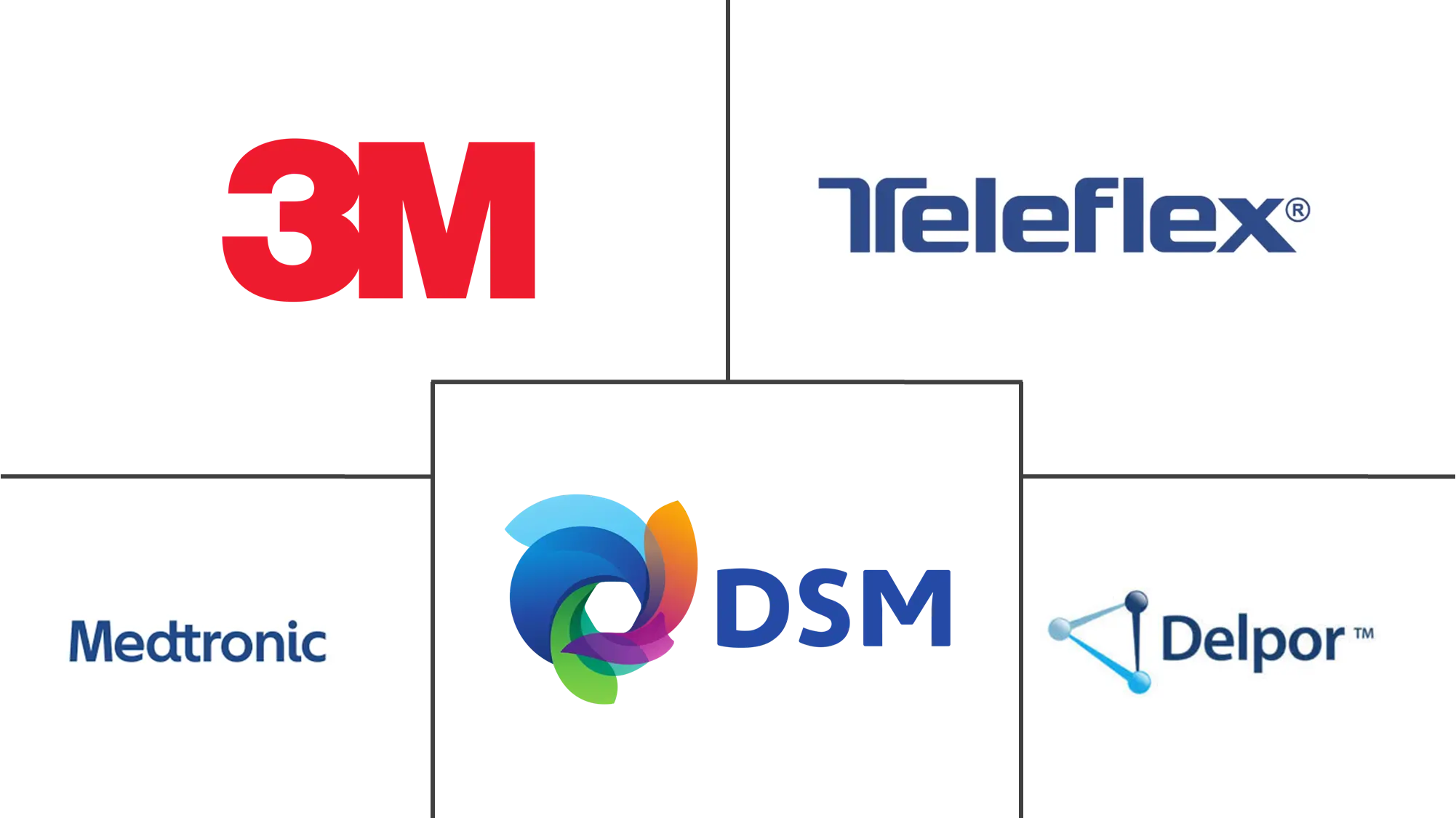Market Size of Implantable Drug Delivery Devices Industry

| Study Period | 2019 - 2029 |
| Base Year For Estimation | 2023 |
| Forecast Data Period | 2024 - 2029 |
| CAGR | 6.50 % |
| Fastest Growing Market | Asia Pacific |
| Largest Market | North America |
Major Players
*Disclaimer: Major Players sorted in no particular order |
Need a report that reflects how COVID-19 has impacted this market and its growth?
Implantable Drug Delivery Devices Market Analysis
The implantable drug delivery devices market is projected to register a CAGR of 6.5% during the forecast period.
The COVID-19 pandemic had a significant impact on the growth of the market due to a reduction in patients' visits to hospitals and clinics as a preventative step to avoid contracting the virus. The decreased volume of surgical procedures due to the strict regulations imposed during the peak stages of the pandemic impacted the demand for implantable drug delivery devices. The pandemic-related regulations affected the supply chain of implantable drug delivery devices, thereby affecting the market's growth. However, the relaxation of strict guidelines on various surgical procedures involving the implantation of drug-delivery devices during the post-pandemic is expected to drive the growth of the market over the forecast period.
The implantable drug delivery devices market is anticipated to grow due to the increasing prevalence of target diseases such as diabetic retinopathy, cancer, cardiovascular disorders, and other chronic diseases. As per an NCBI article published in November 2021, the prevalence of diabetic retinopathy (DR) among persons with diabetes was 16.9%, the majority of sight-threatening DR (STDR) was 3.6%, and the bulk of mild retinopathy was 11.8%. Thus, the increasing cases of diabetic retinopathy are expected to demand more use of implantable drug delivery devices for the treatment, which is expected to drive the market's growth. As per an MHAF article published in June 2022, HIV prevention tools are inserted, injected, infused, or implanted in a person's body from once a month to once a year to provide sustained protection from acquiring HIV. These implants are small devices implanted in the body and release an anti-HIV drug at a controlled rate for continuous protection from HIV over time. Thus, the increasing AIDS infections are also expected to promote the usage and growth of implantable drug-delivery devices.
The increase in chronic diseases is also expected to drive the growth of the market over the forecast period. As per the 2021 report of the International Agency for Research on Cancer which estimated the incidence and mortality of 36 cancer in 185 countries, globally, there were an estimated 19.3 million new cases of cancer diagnosed in 2020 all over the world. The same source also mentioned that over 10.1 million cases were reported in males and 9.3 million in females from the total diagnosed cancer cases. Such a rise in chronic diseases is expected to contribute to the growing demand for implantable drug-delivery devices, thereby driving the growth of the market over the forecast period.
However, factors such as the high cost of devices and surgery costs and the low rate of adoption are hindering the growth of the implantable drug delivery devices market.
